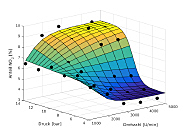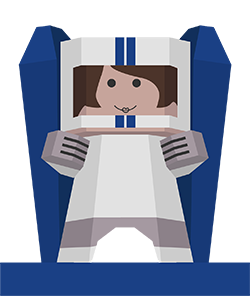Launch project: automated data supply for digital twins

The intention is to offer software and other services in a new transfer centre which can be used in a variety of fields of application for automated and autonomous systems independently of the numerous specific applications. A launch project is to be implemented together with the Cognitive Neuroinformatics Working Group to establish a transfer centre for optimised, assisted, highly automated and autonomous systems (TOPA3S).
The ongoing establishment of fully or partly automated processes and even entirely autonomous systems is a major megatrend of digitisation. As a traditional key enabling technology, the automation and autonomisation of technical systems is spreading across virtually all industrial value chains (Industrie 4.0), logistical processes and services.
There are numerous instances of this in areas of importance for Bremen’s economy, such as aerospace, the automotive industry, the maritime sector, renewable energy and logistics.
At present, highly automated and autonomous systems are programmed using a lot of specific software, which takes a great deal of effort. There is a lack of generalised software tools. Another requirement is to set in motion the desired transfer of expertise between the research and business communities in the field of autonomous driving.
The project idea of the Centre for Technomathematics of Bremen University (ZeTeM) addresses these two key challenges. The intention is to collaborate with the Cognitive Neuroinformatics Working Group to launch a project establishing a transfer centre for optimised, assisted, highly automated and autonomous systems (TOPA3S).
The plan is to offer software and other services in the new transfer centre which can be used in a variety of fields of application for automated and autonomous systems independently of the numerous specific applications.
New and innovative solutions from the horizontal disciplines of mathematics and computer science are to be transferred directly to the companies and used as a key enabling technology for specific applications – from the control of industrial manufacturing and logistics processes to the deployment of autonomous vehicles. The intention is to found a non-profit-making limited liability company offering the development of algorithms for software-based and thus automatic optimisation of automated and autonomous systems as a specific service. The focus is on highly efficient software implementation which fully meets industrial standards from the outset. The software development is to take place on a modular basis so that all of the areas for the development of components needed for automated and autonomous systems are covered and can be prepared for industrial use.
This generalised approach permits the software to be used in different fields of technology. According to the project managers, there is no similar project in Germany.
This launch project will entail the development of the “parameter identification” module which can automatically feed digital twins with data. This means that the digital models of the real world which are always needed for the functioning of automated and autonomous systems can be supplied with data automatically – and not, as has generally been the case so far – by hand.
In the final phase of the launch project, the establishment of the transfer centre will be prepared. In the course of this, a concept for software transfer will be developed, the commercial structure and infrastructure defined, and a non-profit-making limited liability company set up.

This project focus on innovation an is supported by our heroine Felicia